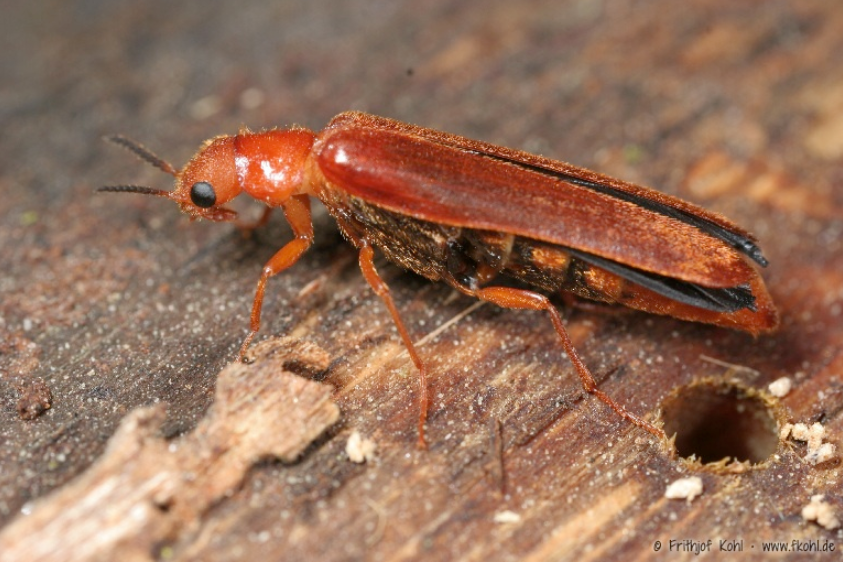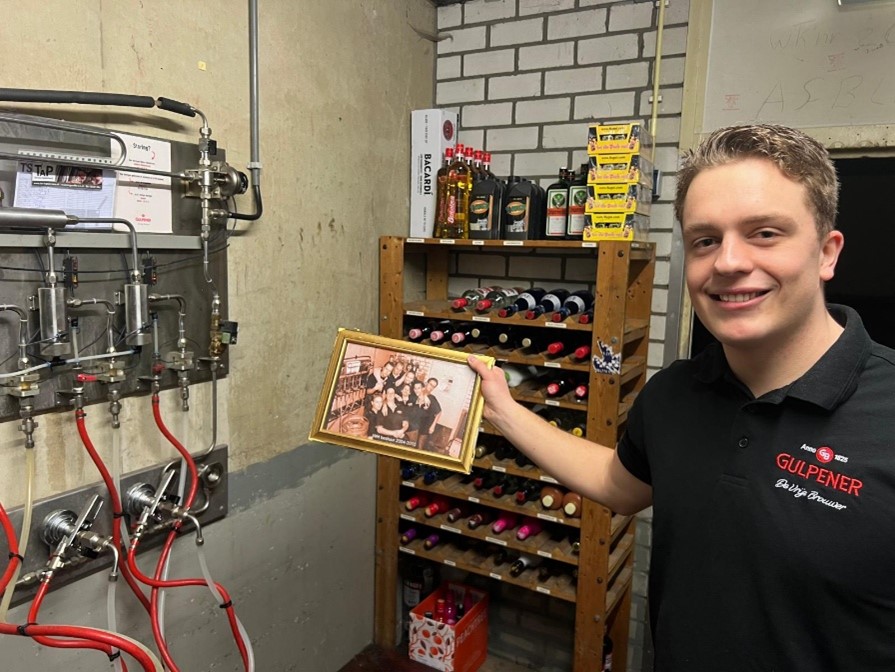Lennart van de Peppel, who works at the Laboratory of Genetics, has been awarded a Rubicon grant to work at the University of Freiburg (Germany) as a post-doc for two years. Using DNA analyses, he will investigate whether ship-timber beetles are the oldest known fungi cultivators on Earth.
Ambrosia beetles cultivate fungi as a food source. The beetles inhabit dead wood and cloak their eggs in fungi that grow into the wood, after which the larvae, once hatched, consume the fungi. In return, the beetles keep competing fungi at bay. Van de Peppel is to work on one family of beetles that consists of fungi and wood eaters, the ship-timber beetle. Little research has been done on this beetle family.
90 million
In the past few years, Van de Peppel studied fungi-cultivating termites. The termites learned this trait 30 million years ago. Various beetle species have cultivated fungi for 90 million years, previous studies show. Moreover, the symbiotic relationship between beetles and fungi has emerged in twelve separate areas. Van de Peppel aims to find out whether the ship-timber beetle is the oldest fungi-cultivator known to man.
The name ship-timber beetle refers to the beetle’s prevalence in ship hulls. They occur all over the planet, including in the Netherlands. Van de Peppel recently caught one in Wageningen. But he also seeks older specimens in beetle collections in museums of natural history. Ancient specimens are trapped in amber that is millions of years old. The oldest amber-encased beetle is 125 million years old.
Organ
The question Van de Peppel seeks to answer is: when did this beetle become a fungi-cultivator? To this end, he will map the DNA of beetles and fungi, determine their relationship and make a DNA family tree. He also wants to scan ancient beetle specimens in amber to detect whether they possess the specific organ that enables them to store and transport fungi. The beetle mother uses this organ to graft the fungi onto her spawn. Beetles with this organ are likely fungi-cultivators.
DNA research will enable Van de Peppel to determine that the mother of two sister beetles with the same characteristic also had this trait. ‘DNA from desiccated ship-timber beetles from museum collections allows you to make a proper genealogy enabling you to prove kinship.’ A family tree such as this, however, does not provide reliable information on how long ago certain deviations occurred. That is where the amber beetles come in handy. ‘If you are able to insert such a fossil into the family tree, it allows you to calibrate the tree. The more fossils, the more accurately calibrated.’

 Photo by F. Kohl
Photo by F. Kohl 

